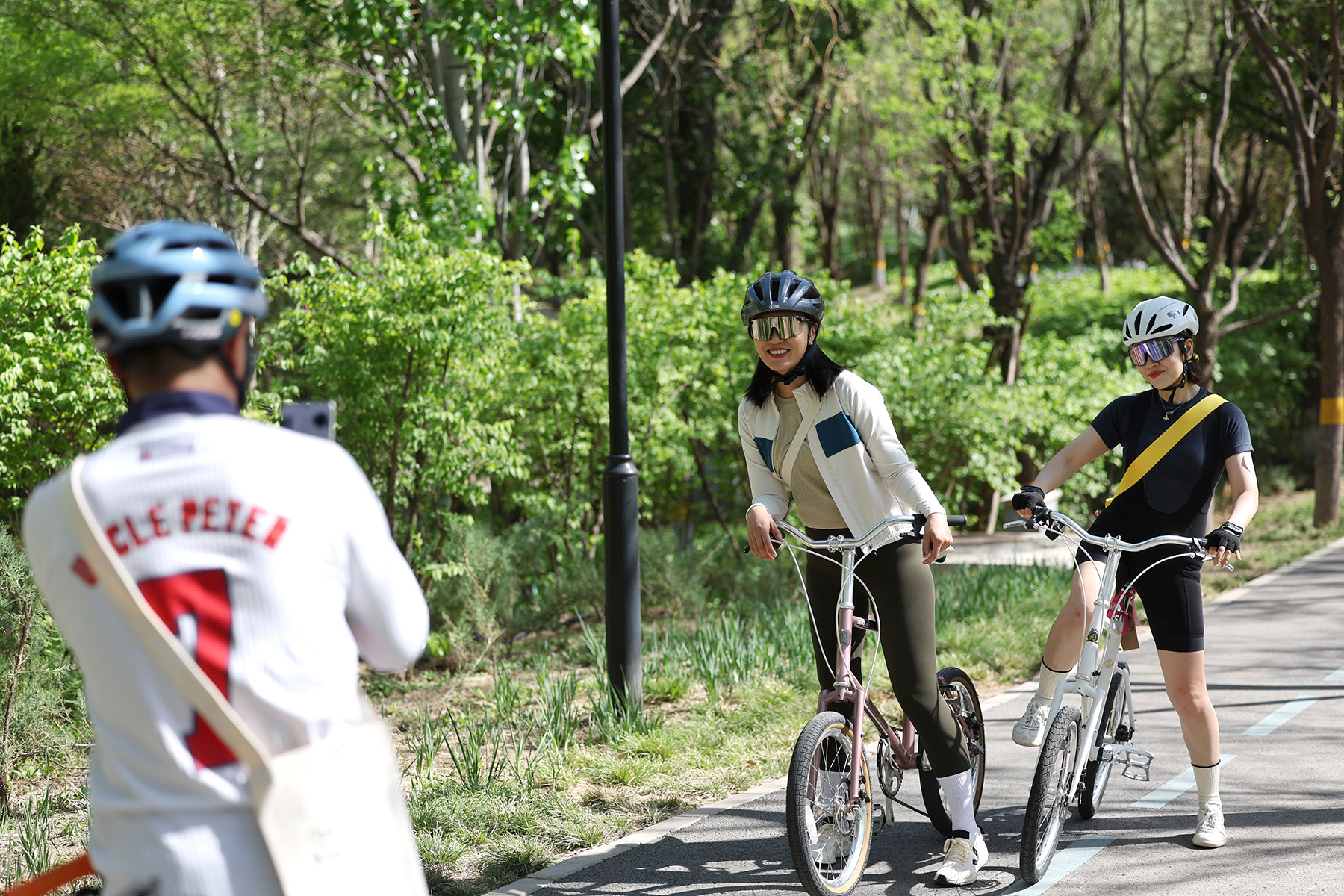
Beijing will establish a greenway network over 5,000 kilometers long by 2035 as part of efforts to create a greener, healthier urban landscape for residents, the municipal government said last week.
The plan, unveiled by the Beijing Municipal Commission of Planning and Natural Resources on Wednesday, says the comprehensive greenway network will seamlessly connect the heart of the city with the plains and mountains, offering residents the opportunity to conveniently immerse themselves in green scenery.
READ MORE: 3 local infections among 89 new cases on Chinese mainland
Greenway planning and design guidelines issued by the Ministry of Housing and Urban-Rural Development describe them as corridors relying on and formed by natural elements that link urban and rural recreational and leisure green open spaces, primarily for recreation and fitness, while also serving as pathways for green commuting for residents and wildlife migration.
Beijing has been working on more than 40 greenway projects since 2013, including the Second Ring Road greenway, the "Three Mountains and Five Gardens" greenway and the Garden Expo greenway.
It now has about 1,465 km of greenways that have restored and integrated ecological resources along their routes, making them vital links for the harmonious coexistence between humans and nature.
"The plan prioritizes human-centric design principles and convenience, catering to the varied needs of residents utilizing greenways," said Feng Yawei, director of the commission's overall planning division. "Leveraging technological advancements and smart applications, the plan aims to enhance connectivity, comfort and accessibility throughout the network."
Thirty-nine routes totaling more than 2,000 km are poised to blanket the entire city, linking over 5,000 residential areas, 780 villages, more than 460 scenic spots and parks, around 460 historical and cultural sites, and over 150 subway stations, according to the commission.
The plan underscores the urgency of constructing 10 city-level branded greenways, with the Second Ring Road greenway poised to epitomize the historical and cultural allure of the ancient capital. Running for about 33 km, it will weave through iconic landmarks such as the Ming City Wall Ruins Park and the Temple of Heaven Park, offering residents a nostalgic stroll through historical Beijing.
ALSO READ: Standards drafted as greenways for public use get new emphasis
"Shaded pathways on the way to work, glimpses of parks from the windows and the melodious chirping of birds in the city … this has already become a reality for me," said Bai Cuicui, a 32-year-old resident of Haidian district.
She said she often cycles to work when the weather is good, and even when she drives to work, she can see the greenery on both sides.
With Beijing's forest coverage reaching 44.9 percent and meeting all 24 criteria required, the city was officially bestowed the title of "National Forest City" by the National Forestry and Grassland Administration in January.
Tang Fanglin, deputy director of administration, lauded Beijing's achievements in balancing forest resource development, optimizing the ecological landscape and enhancing public well-being. The efforts have laid a solid foundation for the city's journey toward becoming a world-class, harmonious and livable capital, Tang said.



